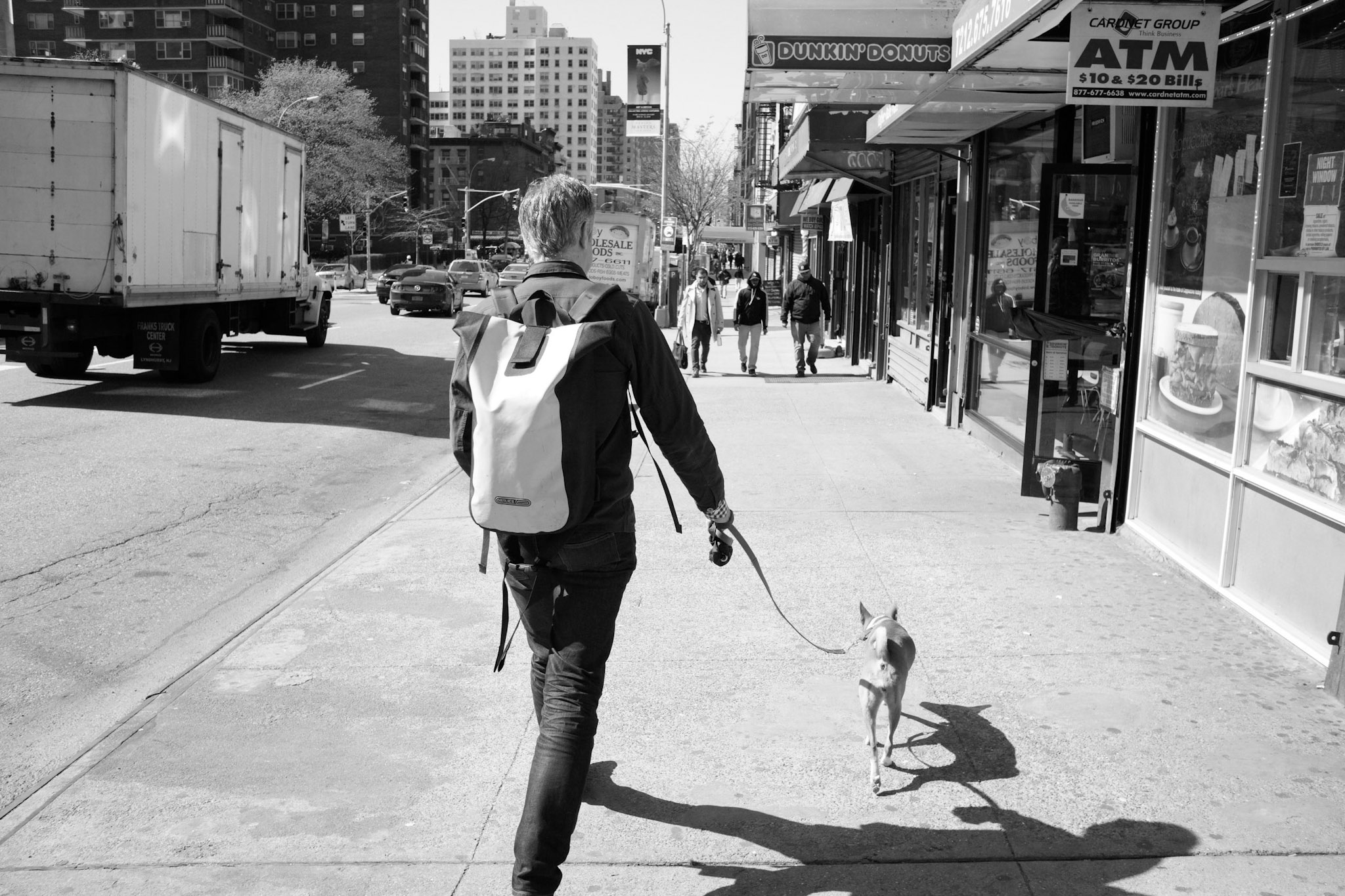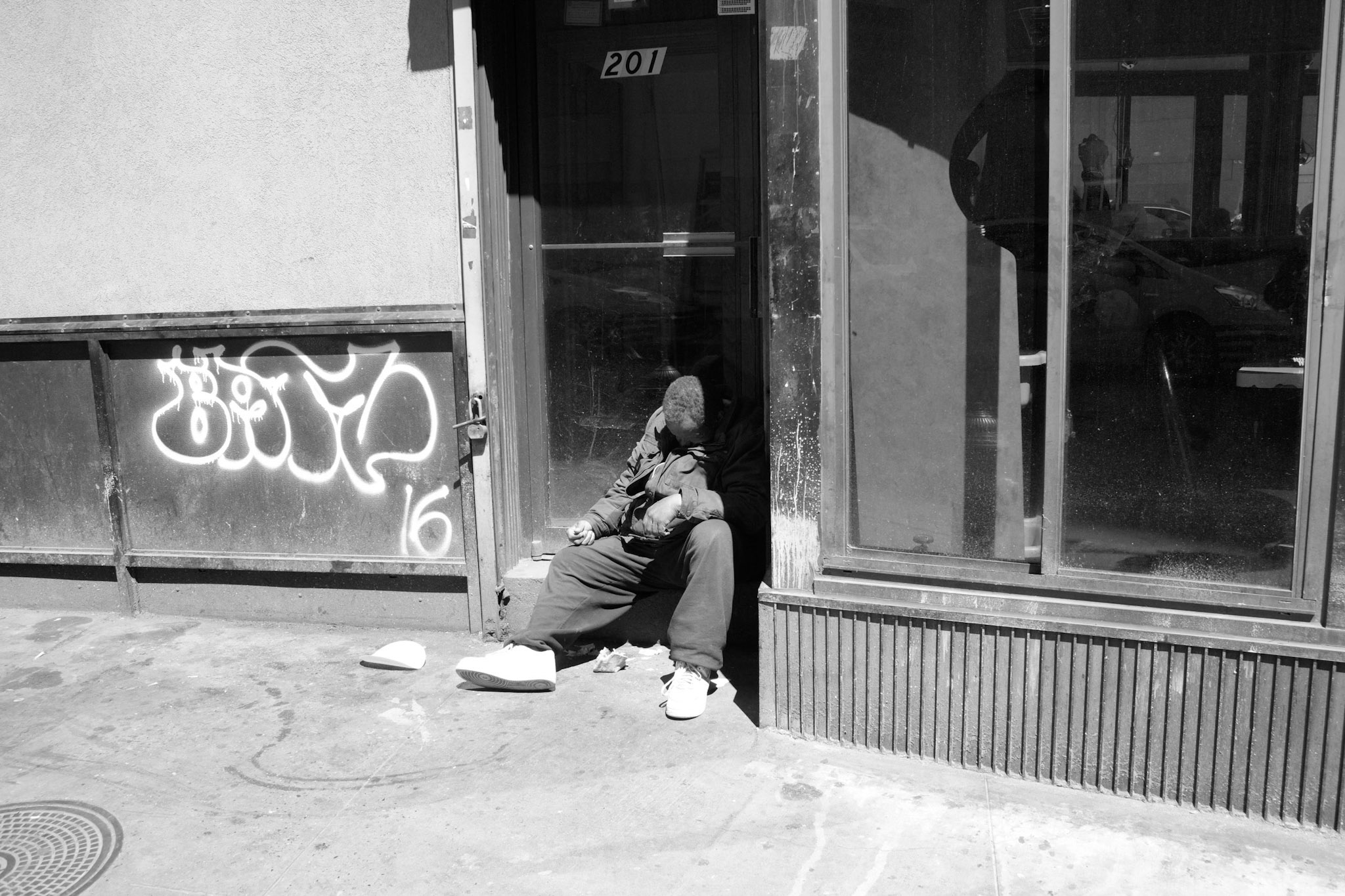Planning
It’s been a busy week of reading, demoing lenses, and experimenting with some photos this week.
Week 2 syllabus detailed a few articles to read, the purchase of my first real photography book, and a field assignment that I felt would come easily to me. So let’s get that out of the way first.
The assignment asks the student to “have a conversation with a stranger and ask them for permission to take their photo.” I was not at the least bit intimidated by this. My work requires a lot of professional networking, interfacing with many different people across the startup ecosystem including entrepreneurs, investors, the press, and a I also do a lot of public speaking. I find that networking and having general introductory conversations with folks comes naturally to me. So I was able to go downstairs to my local coffee shop this morning and after grabbing a table, I quickly chatted up this lovely couple.
Meet Louis and Jan. 40 year residents of Princeton. Louis is a retired learning disability specialist and former professional at a local university. Jan is a retired radiologist. They have two kids who are grown, one is a researcher at the Brookings Institute and the other a lecturer at NYU. I feel like I cheated a bit with this assignment not only because it was an easy conversation to initiate, but I was able to explain to parents of academics that I was completing an assignment and as part of it, I requested a picture. Easy.
The photo wasn’t the greatest because of the hard shadow but I accomplished the assignment. The nature of street photography that is most intimidating is not asking permission from someone to take their picture. It is awkward, intimidating, stressful to take a candid photo of someone in public. I was in NYC yesterday and tried to take a few but you can see I am far away from my subjects. I’m going to have to overcome my fears to really get in and take advantage of this genre.
On to the reading assignments. We were asked to read a few pages out of Looking at Photographs. There were two pages and accompanying photos that stand out to me as I consider this journey:
Robert Capa, 1944
The first photograph (above) and passage to read is “Collaborator, Chartres. 1944” by Robert Capa, a Hungarian photographer who shot a lot of pictures in Europe before, during, and after World War II. In this photo, we can see a French woman, head shaven, who is publicly ridiculed for loving and bearing the child of a German soldier. What is disturbing is the smiles amongst the crowd and a mob-like glee they take in publicly shaming this woman. The passage in the reading resonates with me during this selfie, instagramed, snapchat culture.
“One of the interesting things about photography is the fact that its records of our selves and our works so often do not correspond to our mental images: The photographs make our waistlines look thick, and our postures slovenly, and our house graceless and ill-proportioned. Generally we assume that the difference between our expectation and the camera’s evidence is the result of some kind of photographic aberration. We call it distortion an preserve our faith in the validity of our mental image. Often we are right to do so, for the camera records many unintelligent, insignificant, and circumstantial kinds of of truth. sometimes, however, we can learn from photographs that things were not as we thought they were."
Guilty as charged. I’ve become preconditioned to Instagram and VSCO filters. And it’s because the raw, unprocessed imperfect feel to street photographs is what is drawing me to this new hobby and to participating in this course, I’m going to do my best to adhere to these principals and capture imperfect, CANDID, non rehearsed moments.
Another passage from the reading assignment sums it up best:
“A photographer’s best work is, alas, generally done for himself."
So in that vain, I don’t care if anyone reads this blog, comments or likes my photos. I’m not even going to add a mailing list. Because this is for me, not you. And my photos will be imperfect, and scary, and stressful. And that’s ok.




